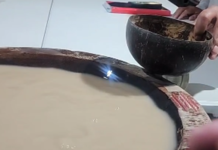Solar power was brought to Tonga about a decade ago and the government said it would help reduce the electricity costs. However, since then critics have argued that this has not happened.

Critics said the electricity charges increased constantly, leading people to believe the idea that solar power would reduce power costs was untrue.
Parliament was recently told that when solar power was introduced to Tonga the electricity powered by diesel cost 70 cents per unit. Now it is about TP$1 per unit.
Across Tonga’s 170 islands, up to 90 per cent of energy needs are met by diesel.
Fuel has accounted for 25% of all imports by value and 10% of GDP.
Lord Nuku said in Parliament the perception that solar power could reduce the costs of the electricity had not come true. He said the number of solar and wind turbine power sources in Tonga was large enough to help reduce the electricity prices.
He said the petrol prices were also in decline. The king’s noble wanted to know what the government’s policy was for the high rate charges of electricity faced by consumers.
Prime Minister Hu’akavameiliku said the problem was that Tonga could only create 20 percent of electricity powered by solar and turbine.
“We are pretty much relying on electricity powered by fuel”, the Prime Minister said.
Hon. Hu’akavameiliku’s statement came after former Prime Minister Pohiva Tu’i’onetoa accused the Tonga Power Board of Directors’ high salaries as one of the causes of the increasing charges on electricity costs.
Tu’i’onetoa’s online comments were met with an equally heated response by Facebook users who said he should have taken care of the problem when he was in office.
Last December Hon. Hu’akavameiliku said the company aimed to have 70% energy from renewable sources in Tongatapu by the end of 2025.
He was speaking at the launch of the biggest solar power plant in the South Pacific.
He said the plant indicated the need for independent power – like solar energy – to achieve their National Energy Roadmap.
“Although the majority of our renewable generation sites are from donor partners, Tonga will also need to pursue partnership and collaborations from independent power producers,” the Prime Minister Sovaleni said.
The plant powers more than 10,000 homes.
It is claimed the new solar farm will offset Tongatapu’s diesel needs by 18 per cent.
Tonga Power worked with New Zealand company Sunergise to implement the six megawatt solar power plant, with support from the Asian Development Bank.
Tonga Power came under fire last year after the deadly Hunga Tong-Hunga Ha’apai eruptions when consumers complained about what they described as a shocking spike in power bills.
In response Tonga Power told consumers that power bills for January 2022 were being distributed and would reflect the government’s contribution of $100 for each household in Tongatapu and Vava’u.
However the spike appeared to have persisted before Tonga power said it would hire experts from overseas to help resolve the issue which was described as a fault in the organisation’s computer programme used to calculate the electricity used by consumers.
Cheaper electricity
In 2019 the ‘Akilisi Pohiva government sought advice from experts on the possibility of reducing electricity charges by 15 percent.
However, it was advised that a 15 percent cut was impossible as it would cost Tonga Power millions of paʻanga when there were hardly any other sources from which income could be raised.
In 2015 a new one megawatt solar facility was commissioned by His Majesty King Tupou VI. It was announced at the time that the project was meant to provide cheaper electricity in the main island of Tongatapu.
His Majesty King Tupou VI named the US$15 million (TP$26.9 million) project, funded by the Government of Japan, as Mata-‘O e-Laʻā or Face of the Sun.
Power Generation Manager of Tonga Power Ltd, Michael Lani ‘Ahokava, said at the time:
“This project started with a vision by the Governments committee, the Tonga Energy Road Map (TERM) almost three years ago to reduce Tonga’s vulnerability to oil price shocks. A vision that would open up doors for renewable developments in Tonga to drive down electricity prices through a reduced reliance on diesel.”
Renewable energy projects funded by the Asian Development Bank began in 2014 to provide solar systems in the outer islands, including Eua, Vava’u and Ha’apai, Uiha, Nomuka, Ha’ano, Ha’afeva in the Ha’apai Group as well as Niuatoputapu and Niuafo’ou.







